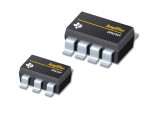Texas Instruments won a 2007 Product of the Year Award for its zero-crossover op amp, the OPA369. I recently spoke with Tadija Janjic, business unit manager in TI’s precision linear group, about the need, challenges, and unexpected hurdles encountered while designing the part.
What was the need for the OPA369?
Offset voltage glitch caused by the change in common-mode voltage is a very prominent design problem in low-voltage applications. During new product development discussions, TI’s precision linear team accepted the challenge of designing an op amp that would eliminate input crossover while maintaining ultra-low power performance of 1 µA something that had never been done in the industry. In short, there was an obvious need in the market, which provided an ultimate challenge to the design team and was an evolution of TI’s zero-crossover op amp product line. As a result, the OPA369 has resolved a frequently mentioned system-level design challenge for customers.
The OPA369 development team consisted of senior-level design, test and strategic development engineers at TI who primarily focus on developing precision, low-voltage, low-power op amps.

Chip image is in, however I should be getting a team photo soon. Stay tuned.–Christina Nickolas
Any design challenges?
The biggest challenge was integrating a patent-pending charge pump in an op amp that only consumes 1-µA quiescent current and squeezing that level of performance into a tiny SC70 package. The combination of design experience and advanced process technology (HPA07) enabled TI to push the boundaries of op amp performance.
Was there an unexpected event that happened?
Despite the complexity of design, the development of the OPA369 was quicker than anyone on the team had initially expected.
How many people helped design the device and how long did it take?
The OPA369 was designed by Vadim Ivanov, senior design engineer at Texas Instruments, along with support from test engineering. It was developed in approximately 9 months.
Christina Nickolas
Advertisement
Learn more about Texas Instruments





